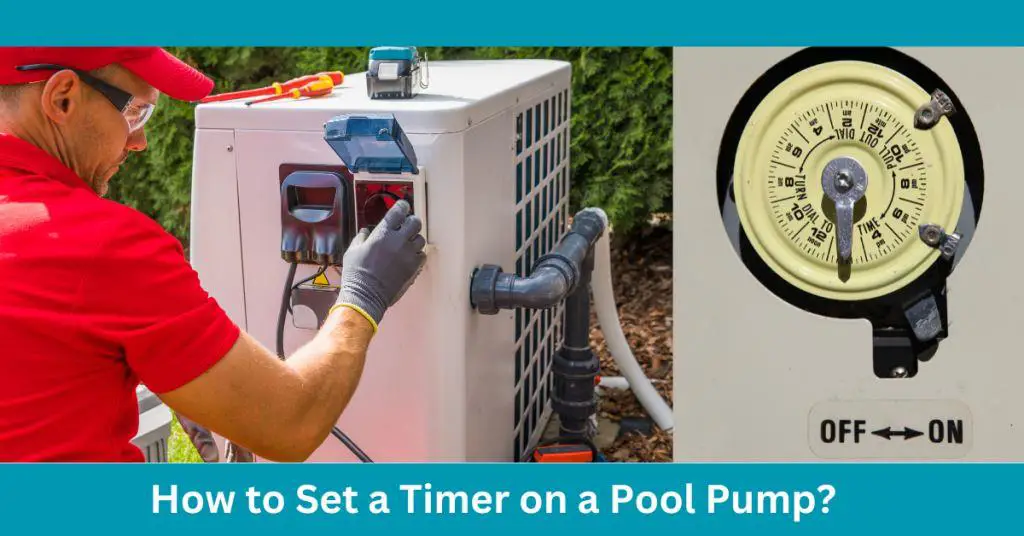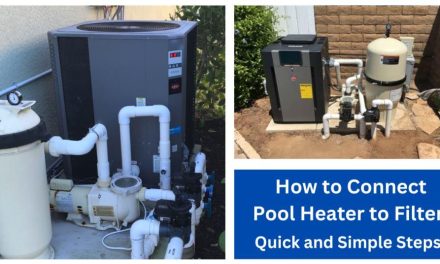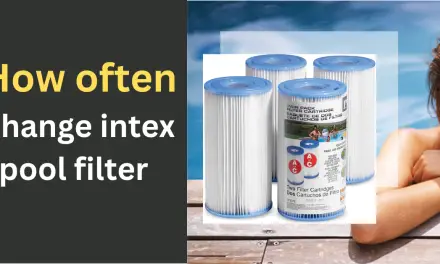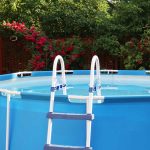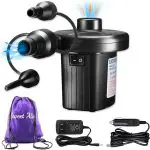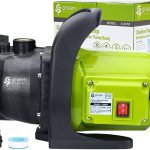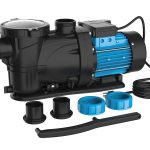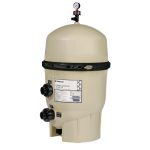To set a timer on a pool pump, adjust the settings to run for 6-8 hours during winter and 10-12 hours during summer to prevent algae growth. Running the pool pump longer in warmer temperatures is necessary to maintain water quality.
Additionally, it is important to adhere to safety precautions and manufacturer instructions when operating a pool pump timer.
Why Efficient Pool Maintenance Matters
Efficient pool maintenance is crucial for the longevity and cleanliness of your pool. Regular maintenance helps prevent issues such as algae growth, filter clogs, and water imbalance. By setting a timer on your pool pump, you can ensure consistent and optimal filtration.
A timer allows you to run your pool pump for the recommended duration each day. During the summer, it is advised to run the pump for 10-12 hours to prevent algae growth. In the winter, 6-8 hours per day is sufficient.
Maintaining a consistent filtration schedule helps keep your pool water clean and clear. It also reduces the workload on your pump, saving electricity and extending its lifespan. So, make sure to set a timer on your pool pump for efficient pool maintenance and a pristine swimming experience.
Understanding Pool Timers
A pool timer is a device that controls the operation of your pool pump and other pool equipment. It allows you to set specific times for your pool system to turn on and off automatically. Using a pool timer has several advantages.
Firstly, it helps to maintain the proper water circulation and filtration, which is crucial for keeping your pool clean and clear. Secondly, it saves energy and reduces costs by running the pool equipment only when necessary. There are different types of pool timers available, such as digital timers, mechanical timers, and WiFi-enabled timers.
Each type offers its unique features and benefits. Understanding pool timers and how to set them will ensure that your pool operates efficiently and effectively.
Selecting The Right Pool Timer
Selecting the right pool timer is essential to ensure proper operation and energy efficiency. When choosing a pool timer, there are several factors to consider. Firstly, make sure to check the compatibility of the timer with your pool pump. Different pool timers work with specific types of pumps.
Next, consider the timer’s features and programming options. It should have easy-to-use controls and allow you to set multiple on/off cycles. Additionally, research popular pool timer brands and read customer reviews to determine their reliability and durability. Some popular brands include Intermatic, NSI Industries, DEWENWILS, Hayward, and Jasco myTouchS.
. . Outdoor. By carefully considering these factors, you can select the right pool timer that meets your specific needs and ensures efficient operation of your pool pump.
Installing The Pool Timer
To install a pool timer, follow these step-by-step guidelines to ensure proper installation. First, ensure your safety by wearing protective gear and turning off the pool pump. Next, locate the timer switch and identify the correct wiring connections. Carefully remove the cover and connect the wires according to the manufacturer’s instructions.
Double-check the connections to ensure they are secure. Once the wiring is complete, replace the cover and turn the pool pump back on to test the timer. Make any necessary adjustments to the timer settings. Lastly, remember to regularly check and maintain the pool timer to ensure it continues to function properly.
Following these steps will help you successfully install a pool timer and automate your pool pump for efficient and convenient operation.
Setting Up The Timer Schedule
Setting up the timer schedule on a pool pump involves knowing how to program it. Adjusting the runtime for different seasons is important. During winter, the pool pump should run for 6-8 hours per day, while in the summer, it should run for 10-12 hours per day.
This is because algae tend to grow more in warm temperatures. Programming the timer schedule ensures that the pool pump operates at the desired times, saving energy and maintaining clean and healthy pool water. By following the manufacturer’s instructions and understanding the specific model of the pool pump, setting up the timer schedule becomes a straightforward process.
With a properly programmed timer schedule, pool owners can enjoy the benefits of an efficient pool pump system.
Troubleshooting Common Timer Issues
To troubleshoot common timer issues with a pool pump, here are some helpful tips. First, check for power supply problems. Ensure that the timer is receiving power and the circuit breaker is not tripped. Next, examine the programming settings. Make sure the timer is set to the correct time and duration for the pool pump’s operation.
If the timer is not functioning properly, try resetting it or replacing the batteries. Another potential issue may be a faulty timer motor. In this case, it may be necessary to replace the timer motor. Additionally, check for any loose or damaged wiring connections.
Tighten or repair any loose wires as needed. Finally, if all else fails, consult the user manual or contact a professional for further assistance. Troubleshooting timer malfunctions is crucial to ensure your pool pump operates efficiently and effectively.
Maintaining The Pool Timer
Regular maintenance practices for pool timers are crucial to ensure their proper functioning. One of the signs that a timer may need servicing is when it becomes difficult to set or adjust the timer settings. This can happen due to wear and tear or malfunctioning internal components.
Another sign is when the timer fails to turn on or off the pool pump at the scheduled times. This can indicate issues with the electrical connections or the timer motor. It is important to regularly inspect the timer for any signs of damage, corrosion, or loose wiring.
Cleaning the timer and lubricating any moving parts can also help in maintaining its efficiency. Additionally, replacing batteries in a digital timer and checking the power supply can prevent any potential problems. By following these maintenance practices, pool owners can ensure that their timers continue to function effectively and provide seamless control over the pool pump.

Credit: dkelectricalsolutions.com
Efficient Pool Maintenance Tips
Setting a timer on your pool pump is essential for efficient pool maintenance. Here are some additional tips to save energy and money. First, make sure to choose a timer that is compatible with your pool pump system. Next, set the timer to run the pool pump during off-peak hours when electricity rates are lower.
This will help reduce your energy costs. Additionally, consider adjusting the run time of the pool pump based on the season. During winter, you can reduce the run time to 6-8 hours per day, while in summer, it is recommended to run the pump for 10-12 hours per day to prevent algae growth.
Regularly monitor and adjust the timer settings as needed to ensure optimal pool maintenance and energy efficiency. By following these tips, you can enjoy a well-maintained pool while saving both energy and money.
Frequently Asked Questions For How To Set A Timer On A Pool Pump?
How Should I Set My Pool Pump Timer?
To set your pool pump timer, follow these steps: 1. Determine the desired run time for your pool pump based on the season: 6-8 hours in winter, 10-12 hours in summer. 2. Locate the timer on your pool pump. 3. Set the start time by turning the dial or pressing the buttons on the timer.
4. Set the run time by adjusting the duration on the timer. 5. Double-check that the timer is set to the correct time by comparing it to a reliable clock or watch.
How Long Should A Pool Pump Run Daily?
On average, a pool pump should run 6-8 hours daily during winter and 10-12 hours daily during summer.
Should I Put My Pool Filter On A Timer?
Yes, you should put your pool filter on a timer to ensure it runs consistently and efficiently.
Conclusion
To ensure the proper functioning of your pool and maintain its cleanliness, setting a timer on your pool pump is essential. By setting a timer, you can automate the pump’s operation, saving you time and effort. Running your pool pump for the right amount of time is crucial.
During winter, it’s recommended to run the pump for around 6-8 hours per day. Summers require longer pump operation, typically 10-12 hours per day. This extended runtime is necessary because warm temperatures promote algae growth, which can lead to water quality issues.
By setting a timer on your pool pump, you can easily customize its schedule to align with your specific needs and energy efficiency goals. This automation allows you to maintain a clean and healthy pool without the hassle of manually turning on and off the pump.
Remember, regular maintenance and cleaning are also essential for optimal pool performance. With the right combination of timer settings and ongoing upkeep, you can enjoy a crystal-clear pool all year round. So go ahead, set that timer and take the hassle out of pool maintenance!

